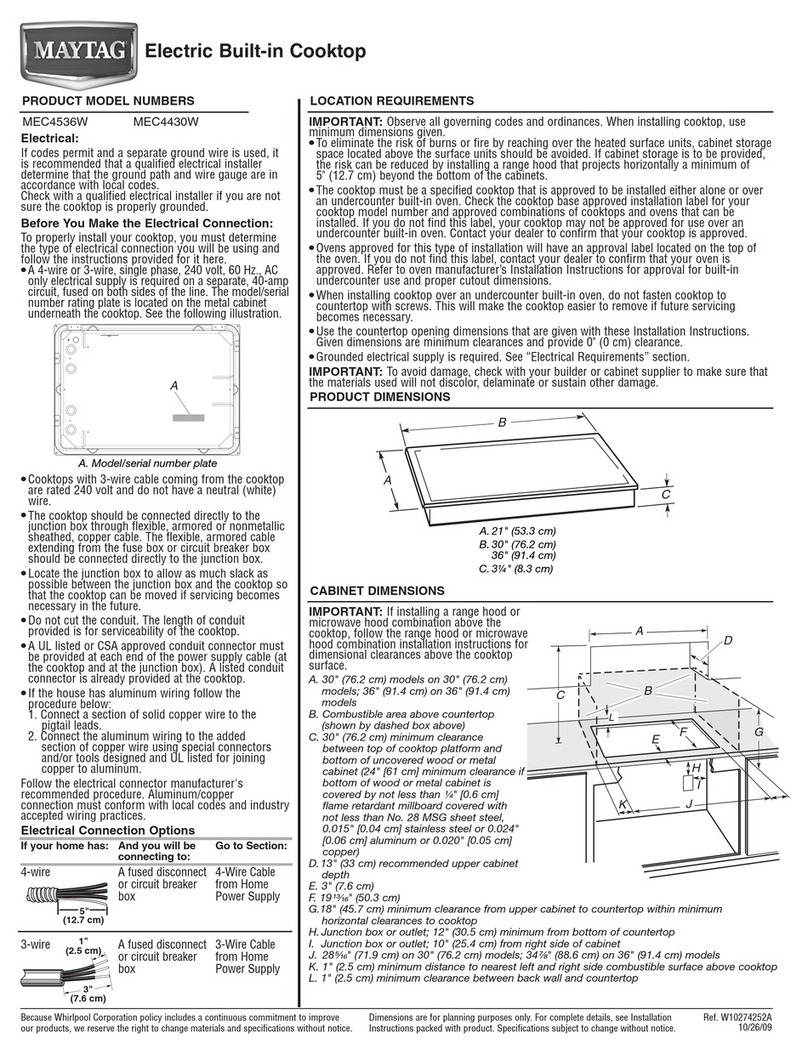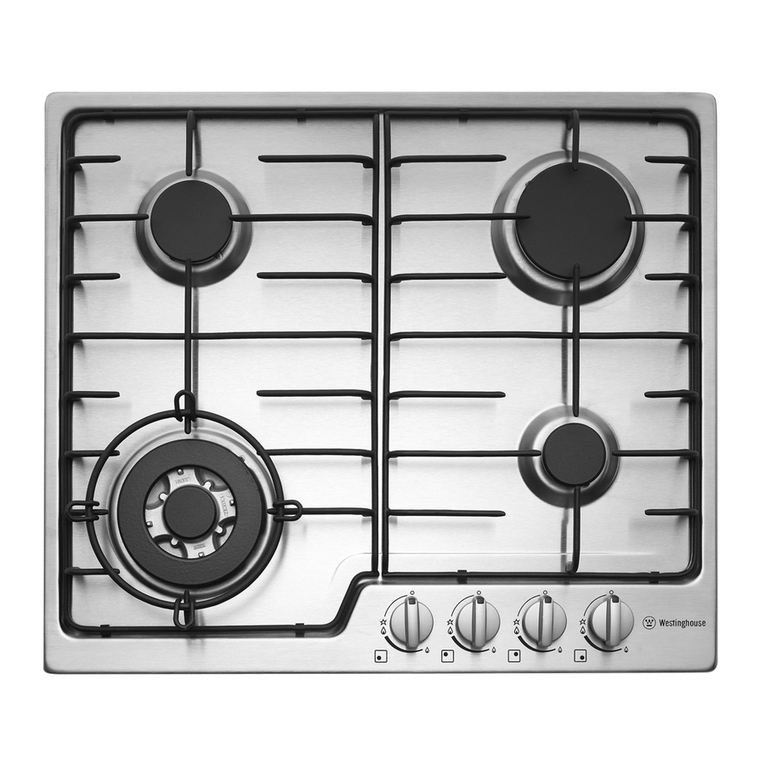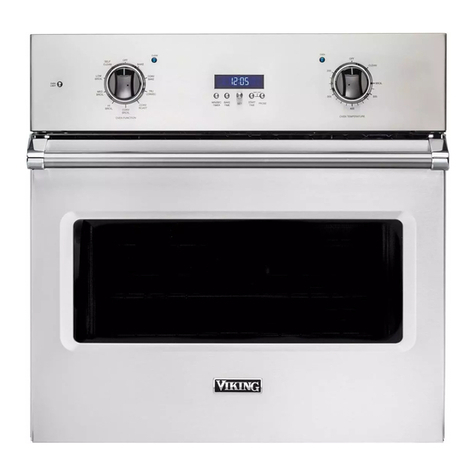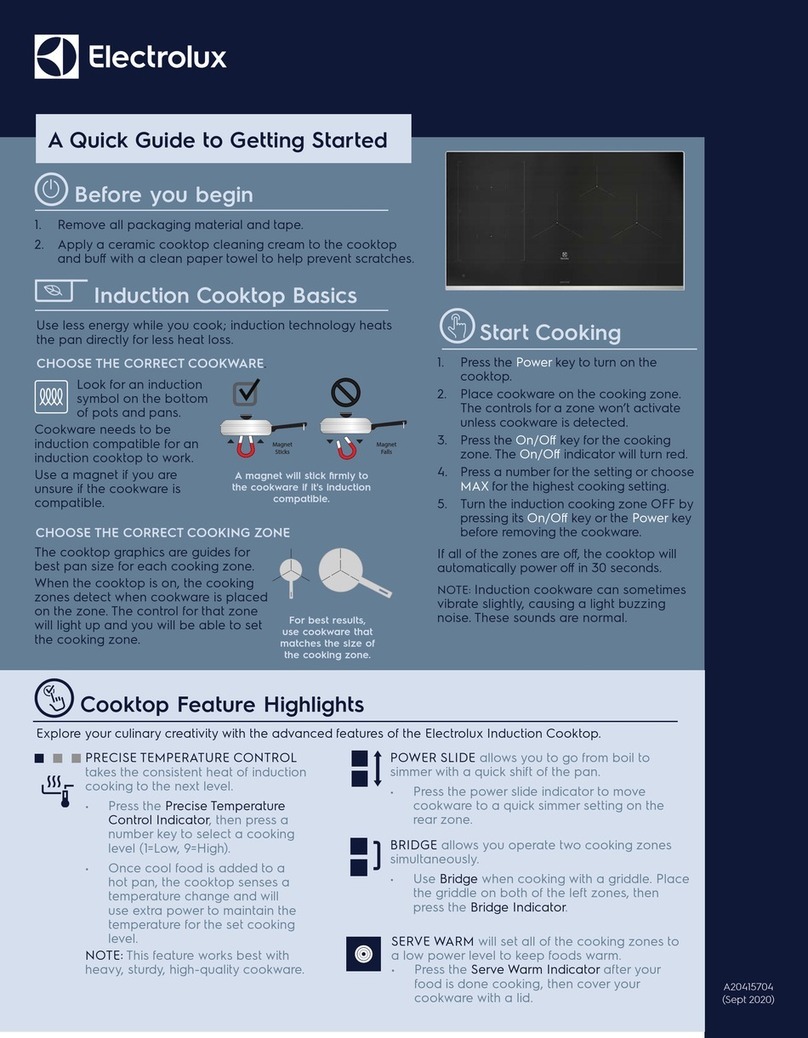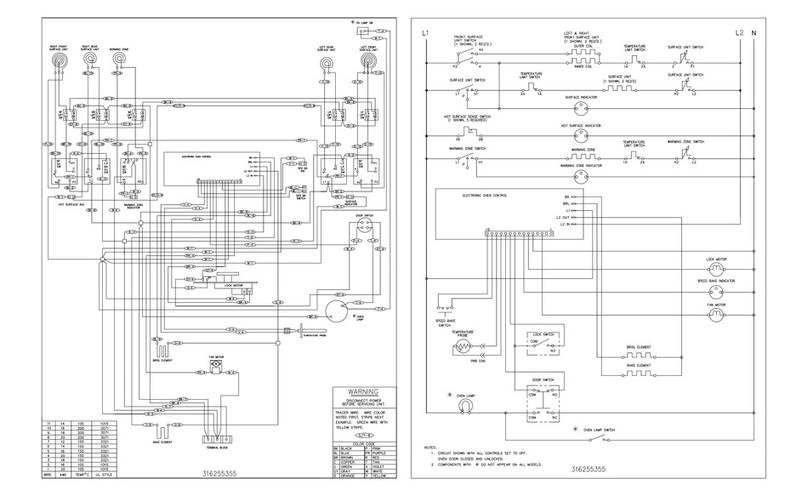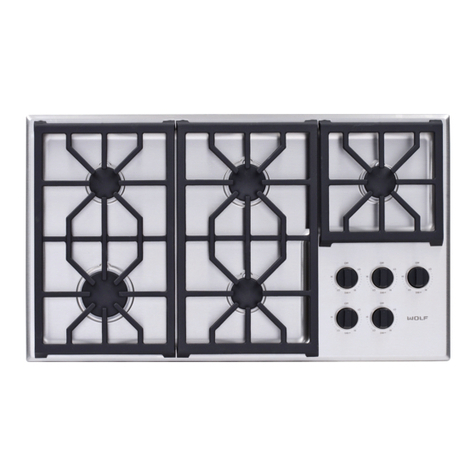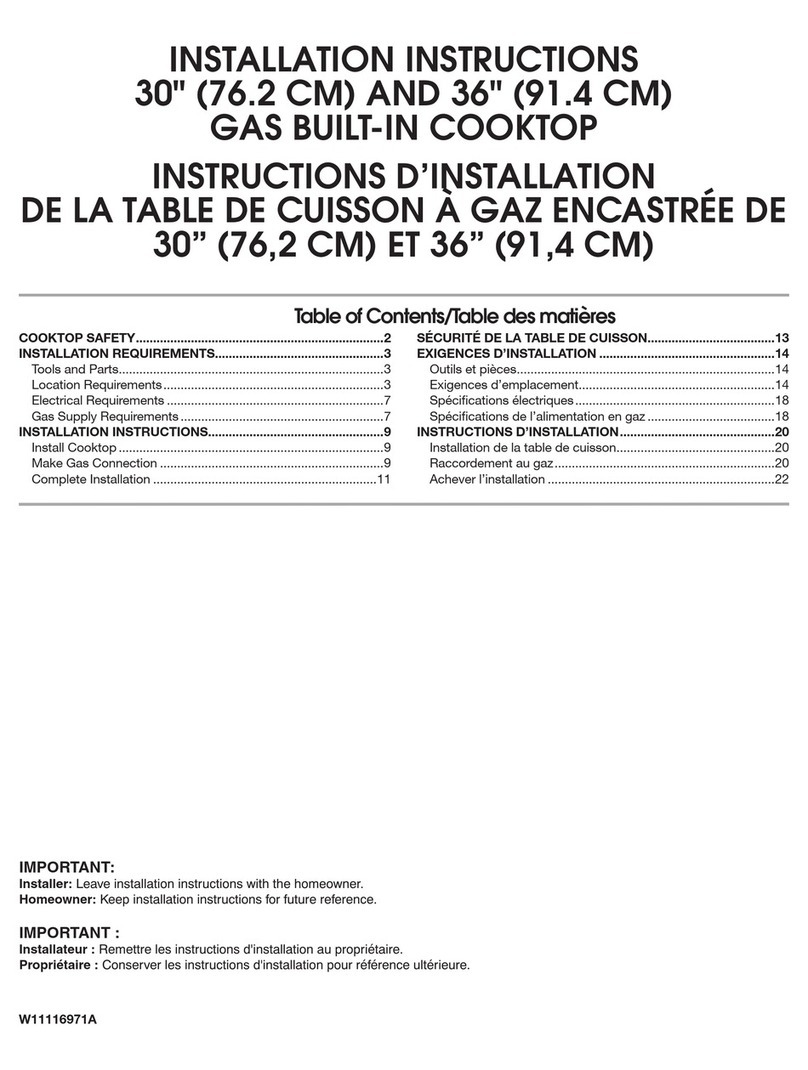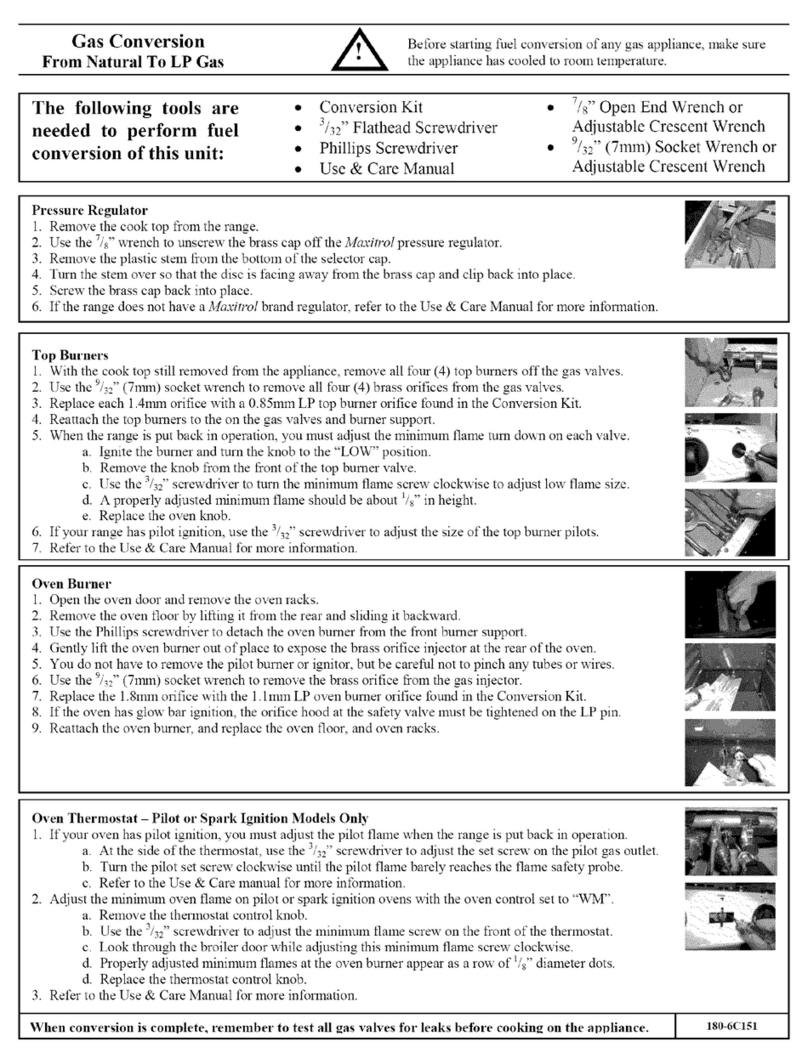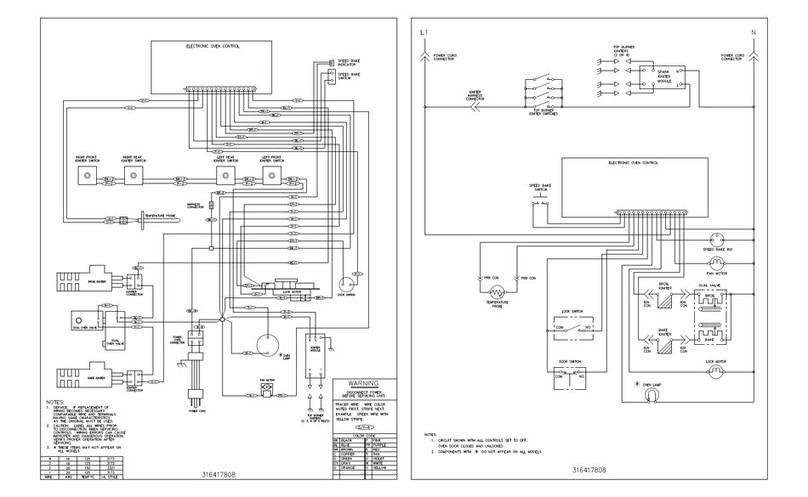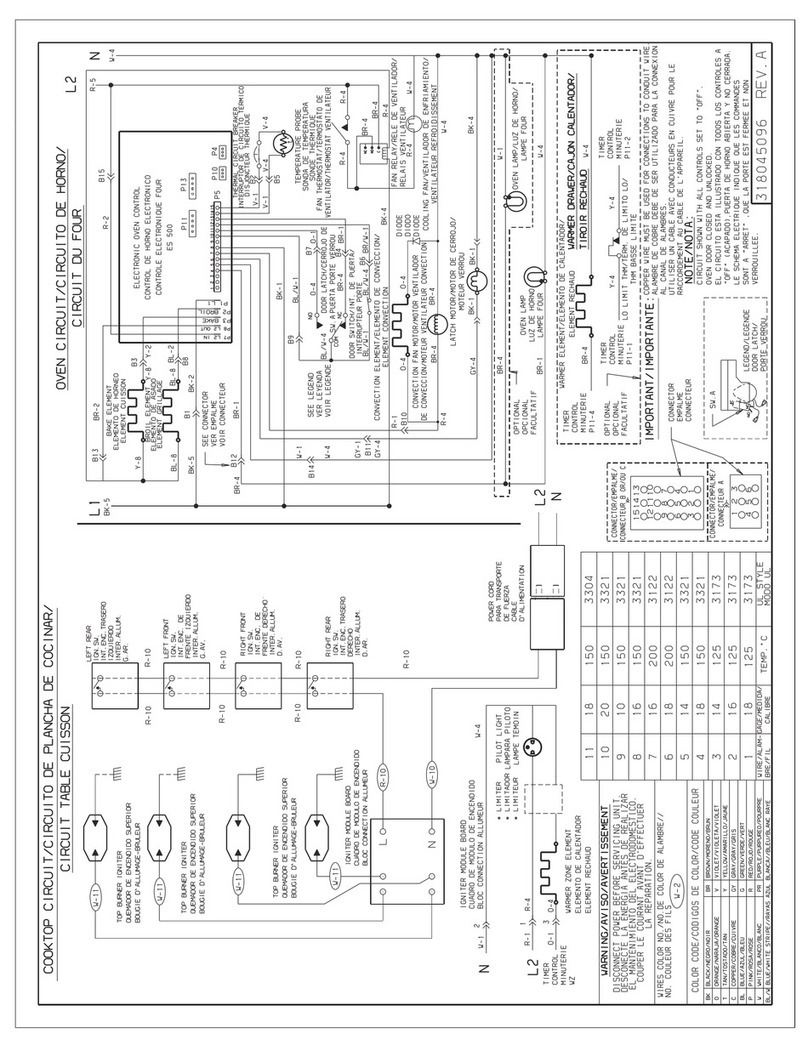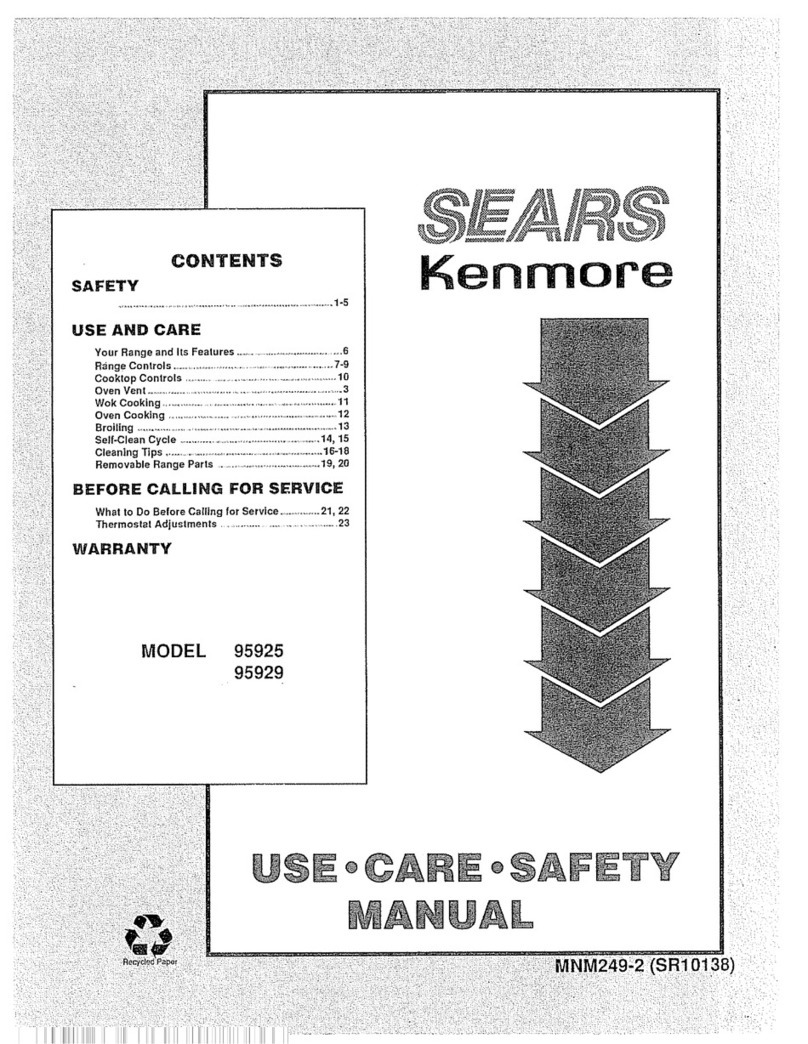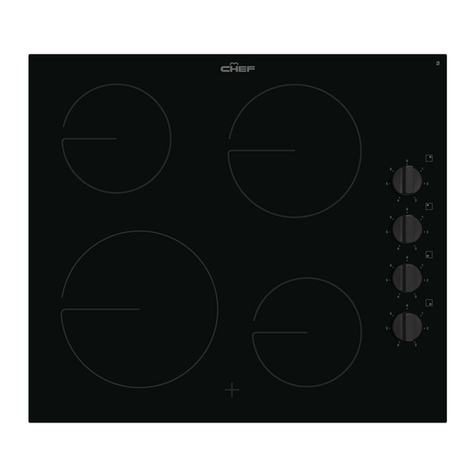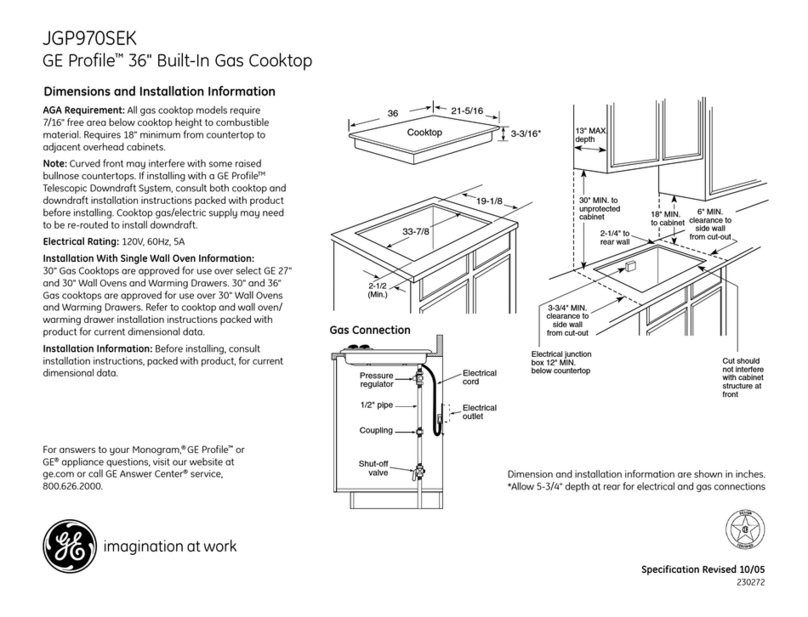Bestlink BLGSW905CF User manual

BESTLINK INTERNATIONAL
User instructions
Maintenance instructions
Installation & service instructions
Cooktop models:
BLGSW905CF
BLGSW905C
BLGSW705CF
BLGSW705C
BLGSW704CF
BLGSW704C
BLGSW60CF
BLGSW60C
BLGS60CF
BLGS60C
BLGS60EF
BLGS60E
BLGSW60EF
BLGSW60E
BLGSW30CF
BLGSW30C
GMK 10023
AS 4551
This cooktop is approved for use with Natural and Propane gases.
Leave instructions with the owner.

2
Table of content
Table of content -----------------------------------2
Introducing your new cooktop -----------------3
Dear customer --------------------------------------- 3
Notes on disposal ------------------------------------ 3
Gas supply -------------------------------------------- 3
Electrical supply ------------------------------------ 3
What to do if you smell gas ----------------------- 3
Safety considerations ------------------------------- 4
Warnings: -------------------------------------------- 4
User instructions ----------------------------------5
Burner operation and ignition ------------------- 5
Manual ignition ------------------------------------- 6
Ventilation-------------------------------------------- 6
Abnormal operation -------------------------------- 6
Cleaning the cooktop -----------------------------7
Preventative maintenance ------------------------- 7
Installation instructions -------------------------7
Installer instructions ------------------------------- 7
Statutory requirements ---------------------------- 7
Overall dimensions --------------------------------- 8
Installation dimensions & clearances ----------- 8
Installation procedure ---------------------------9
Gas connection -------------------------------------- 9
Boiling burner adjustments--------------------- 10
Energy consumption ----------------------------- 10
Electrical connection ----------------------------- 10
Warranty warning-------------------------------- 10
Conversion --------------------------------------- 11
Propane Gas to Natural Gas-------------------- 11
Natural Gas to Propane ------------------------- 11
Trouble shooting -------------------------------- 12
Service--------------------------------------------- 13
To replace injectors------------------------------- 13
To remove hob------------------------------------- 13
To remove and service gas control valves---- 13
To replace the thermocouple ------------------- 13
To replace the spark electrode ----------------- 13
To replace the electronic ignition module--- 13
To replace internal wiring and gas control
ignition micro switch ----------------------------- 13
Wiring diagrams ---------------------------------- 13
Data plates------------------------------------------ 14
For service and spare parts contact: ---------- 14

3
Models
Model numbers with the ‘F’ extension are fitted with
flame failure device.
BLGSW60CF, BLGSW60C (cast iron pan sup-
ports. Shown below)
BLGSW60EF, BLGSW60E (enamel pan supports)
BLGS60EF & BLGS60E (enamel pan supports,
shown below)
BLGS60CF & BLGS60C (cast iron pan supports)
BLGSW705CF & BLGSW705C
BLGSW704CF & BLGSW704C
BLGSW905CF & BLGSW905C
BLGSW30CF & BLGSW30C
Introducing your new cooktop
Dear customer
Thank you for having purchased one of our pro-
ducts.
We are certain that this new modern, functional and
practical appliance, built with the very highest quality
materials, will meet your requirements in the best
possible way. This appliance is easy to use, it is
however important to thoroughly read the instruc-
tions in this manual, in order to obtain the best re-
sults.
These instructions are only valid for Australia. We
shall not be held responsible for any damages to
persons or property caused by incorrect installation
or use of the appliance.
We shall not be held responsible for any inaccura-
cies in this manual due to printing or transcription
errors; the designs in the figures are purely indica-
tive. We also reserve the right to make modifications
to the products as may be considered necessary or
useful, also in the interest of the user, without jeop-
ardising the main functional and safety features of
the products themselves
These instructions cover 6 cooktops of varying cook-
top burner configurations. All cooktops are fitted with
a stainless steel hob, electronic spark ignition.
Model numbers with the ‘F’ extension are fitted with
flame failure device.
Please consult the instructions pertaining to your
individual cooktop as they are described in these
instructions.
The cooktop’s data plate is accessible even with the
cooktop fully installed. It is positioned on the bottom
of the unit. A duplicate copy is supplied at the back
of this instruction manual. Always quote the details
from it to identify the appliance when ordering spare
parts or requesting a service.
♦In case of malfunction, turn off the cooktop’s
gas supply before contacting the service
centre for assistance.
♦Only an authorized person should connect
and service this appliance.
Notes on disposal
Old appliances still have some residual value. En-
sure an environmental means of disposal in order for
valuable raw materials to be recovered and used
again.
Please dispose of packaging materials appropri-
ately.
Gas supply
Check that the data plate shows the appliance is
suitable for the available gas.
Electrical supply
This appliance requires connection to a 10 Amp wall
socket.
What to do if you smell gas
♦Do not try and light the appliance.
♦Do not touch any electrical switches; do not use

4
a phone in your building.
♦Immediately call your gas supplier from a neigh-
bour’s phone. Follow the gas supplier’s instruc-
tions.
♦If you cannot reach your gas supplier, call the
fire department.
Safety considerations
If the information in this manual is not followed ex-
actly, a fire or explosion may result, causing property
damage, personal injury or death.
♦Be sure to disconnect the electrical supply be-
fore disassembly of the appliance.
♦Never leave the appliance unattended when
cooking with fat or oil. It could ignite if over-
heated.
♦In case of defect, switch electric power off at the
mains.
♦Never use an appliance that is not working cor-
rectly.
♦Only ignite the gas burners when all the burner
components are correctly assembled.
♦Leads from electrical appliances must not touch
the cooktop. They will melt and the cable insula-
tion will be damaged.
♦Do not allow the flame to extend beyond the
edge of the cooking utensil. This instruction is
based on safety considerations.
♦Do not forget that the unit becomes hot when in
use. Common sense is important. Just because
the flame is out, does not mean that the parts
cannot still be hot.
♦Small children must be kept at a safe distance
from the appliance.
♦Keep the appliance area clear and free from
combustible materials.
♦Note: To avoid jeapordising the electrical safety
of the appliance, it is forbidden to use high-
pressure or steam jet cleaning devices.
♦Cabinets installed above the gas cooktop must
have a minimum clearance of 650 mm (24”).
♦Important.
♦When using a very large pot, leave a gap of at
least 50 mm (2”) to avoid damaging parts in
bench top wood, plastic or other non-heat re-
sistant materials. Never leave oil of hot fat unat-
tended.
♦Never leave the appliance unattended when the
burners are being used. Make sure there are no
children in the near vicinity. Particularly make
sure that the pan handle are correctly positioned
and keep a check on foods requiring oil and
grease to cook since these products can easily
catch fire.
♦Don’t use pans with buckled bottoms
♦Never pour water on burning fat or oil. Cover
with a damp cloth to extinguish fire and discon-
nect the cooking appliance.
♦Never place unstable pans or containers on the
cooking hob or burners as they may accidentally
tip over.
Warnings:
♦In the event of a fault disconnect the electri-
cal power to the cooktop and shut OFF the
gas supply. Contact your local gas supplier
or service agent. The service agent details
are at the rear of this manual.
♦Do not spray aerosols in the vicinity of this
appliance while it is in operation.
♦Where this appliance is installed in a marine
craft or in caravans, for safety reasons it
shall not be used as a space heater.
♦Unsuitable for use in a marine craft, cara-
vans or mobile homes, unless each burner is
fitted with a flame guard.
♦Do not modify this appliance.
♦This appliance is not intended for use by
persons (including children) with reduced
physical, sensory or mental capabilities, or
lack of experience and knowledge, unless
they have been given supervision or instruc-
tion concerning use of the appliance by a
person responsible for their safety. Children
should be supervised to ensure that they do
not play with the appliance.
♦Make sure you keep these instructions for
use and assembly in a safe place, so that
you can hand them on with the appliance if
it ever changes owner.

5
User instructions
The lay-outs of the 5 cooktops covered in these in-
structions are shown below. Please check the model
number of your particular cooktop to identify your
lay-out.
Model No’s: BLGSW60CF & BLGSW60C (cast
iron pan supports).
Model No’s BLGSW60EF & BLGSW60E (enamel
pan supports)
1. Triple ring (wok) burner
2. Semi-rapid boiling burner
3. Auxiliary boiling burner
4. Cast iron pan support
5. Right front boiling burner control knob
6. Right rear boiling burner control knob
7. Left rear boiling burner control knob
8. Left front boiling burner control knob
Model No’s: BLGS60CF & BLGS60C (cast iron
pan supports)
Model No’s BLGS60EF & BLGS60E (enamel pan
supports)
1. Rapid boiling burner
2. Semi-rapid boiling burners
3. Auxiliary boiling burner
4. Wire pan support or cast iron pan support
5. Right front boiling burner control knob
6. Right rear boiling burner control knob
7. Left rear boiling burner control knob
8. Left front boiling burner control knob
Model No: BLGSW705CF & BLGSW705C
1. Rapid boiling burner
2. Semi-rapid boiling burners
3. Auxiliary boiling burner
4. Triple ring (wok) burner
5. Cast iron pan support
6. Left front boiling burner control knob
7. Left rear boiling burner control knob
8. Central triple ring (wok) burner control knob
9. Right rear boiling burner control knob
10. Right front boiling burner control knob
Model No: BLGSW704CF & BLGSW704C
1. Rapid boiling burner
2. Semi-rapid boiling burner
3. Triple ring (wok) burner
4. Auxiliary boiling burner
5. Cast iron pan support
6. Left boiling burner control knob
7. Central rear boiling burner
8. Central front boiling burner
9. Right boiling burner
Model No: BLGSW905CF & BLGSW905C
1. Rapid boiling burner
2. Semi-rapid boiling burners
3. Auxiliary boiling burner
4. Triple ring (wok) burner
5. Cast iron pan support
6. Left front boiling burner control knob
7. Left rear boiling burner control knob
8. Central triple ring (wok) burner control knob
9. Right rear boiling burner control knob
10. Right front boiling burner control knob
Model No: BLGSW30CF & BLGSW30C
1. Triple ring (wok) burner
2. Semi rapid boiling burner
3. Semi rapid burner control knob
4. Wok burner control knob

6
Burner operation and ignition
A graphic screen printed on the hob identifies the
individual control knob with the relevant boiling
burner. See preceding figures.
Place the boiling burner body (T) over the burner
stem ensuring that the boiling burner body is posi-
tively located over the spark ignition electrode and
that the burner cap (C) sits squarely on the burner
body.
The triple ring (wok) burner body is also placed over
the burner stem and is positively located over 4 re-
taining channels. The spark electrode is located out-
side the burner head perimeter. Place the outer
burner ring (B) cap and the inner burner cap (A) on
the burner head ensuring they are positively located
in position.
The burners have 2 heat settings:
Large flame = highest setting
Small flame = lowest (simmer) setting
The highest flame setting
is used for initial boiling.
For ongoing cooking a
variable setting between
high and low flame can be
made.
To activate the burner de-
press the control knob and
turn to the ‘high’ flame’ position. Keep knob de-
pressed for approx. 6-7 seconds to allow the safety
shut-off device to activate. The flame will extinguish
if the knob is released too soon. If ignition fails de-
press the control knob and try again. If the flame is
not established in 15 seconds, release the control
knob and open a door for ventilation and wait one
minute before attempting a new procedure.
If the burner flames are extinguished – for whatever
reason – turn OFF the control knob and wait at least
one minute before retrying to ignite the burner.
Ensure that the flames do not extinguish when you
reduce to low flame quickly.
To turn off the gas supply to the burner, return the
control knob to the ‘OFF’ position.
Manual ignition
In case of a power failure the burners can be manu-
ally ignited with a match.
Ventilation
Use of a cooking appliance produces heat and mois-
ture in the room in which it is installed. The room
must therefore be properly ventilated by keeping
natural air vents clear and by activating a mechani-
cal aeration device such as a range hood or exhaust
fan.
Abnormal operation
Burner flames should be clear blue, with no yellow
tipping. If the burner shows any abnormality check
that the burner heads are correctly located.
Any of the following are also considered to be ab-
normal and may require servicing:
♦Sooting of cooking utensils
♦Burners not igniting properly.
♦Burners failing to remain alight.
♦Burners extinguish by cupboard doors operation.
♦Gas valves are difficult to turn.
♦If service or spare parts are required refer to
contact details on rear page of this manual.

7
Cleaning the cooktop
Please clean cooktop thoroughly before first use.
Operate boiling burners and wok burner on HIGH for
a few minutes to eliminate the ‘new’ smell.
After installation, wipe clean all stainless steel parts
with a damp cloth to remove any traces of dirt. When
using a stainless steel cleaner ensure that all traces
of the cleaner are thoroughly removed.
Periodically wash the hotplate, the cast iron (or en-
amelled) pan supports, the burner heads and the
enamelled burner caps. Following this all parts
should be thoroughly rinsed and dried.
♦Never wash them while they are still warm .
♦Never use abrasive powders to clean the parts.
Do not allow vinegar, coffee, milk, salted water,
lemon or tomato juices to remain in contact with
the enamelled surfaces for long periods of time.
♦Check that burner heads and slots have not be-
come clogged with foreign bodies.
♦Check that burner heads and caps are posi-
tioned correctly. Refer figures on page 6
♦Check that pan supports are replaced correctly.
The rounded corners should be set towards the
side edges of the cooktop.
♦Do not use steam jets for cleaning the cooktop.
♦Always keep stainless steel from contact
with acid or acid based solvents (liquid or
vapour).
Preventative maintenance
This cooktop should not require ongoing mainte-
nance provided you ensure:
♦All spillages are cleaned as soon as they occur.
♦Burners are kept clean.
♦Burner ports are free of debris, food and any-
thing else that may cause obstruction.
♦Spark electrodes and thermocouples are kept
clean
♦Burners are assembled correctly.
♦Do not allow water into the area where the injec-
tors are located.
Installation instructions
Installer instructions
These instructions cover the installation of 8 different
cooktops. For dimensions refer drawings following
these installer instructions.
This appliance must be installed in a position with
the proper level of ventilation. Do not obstruct the
flow of combustion and ventilation air.
♦The gas pressure regulator supplied with the
appliance must be installed in line with the gas
pipe (N.G. only)
♦Before commencing any work, make sure that
the power point switches are turned off and the
three pin plug is removed.
♦If the appliance cannot be adjusted to perform
correctly contact Bestlink International or the
local gas utility. For service contact telephone
number refer page 15.
♦Instruct the user in the operation of the appli-
ance before leaving.
♦For pressure testing in excess of 3.5 kPa (1/2”
psig) the appliance and its individual shut-off
valve must be disconnected from the gas supply
piping system. For pressure testing of the gas
piping system at pressures equal or less than
3.5 kPa (1/2”psig) that appliance must be iso-
lated from the gas supply system by closing its
individual shut-off valve during any pressure
testing.
♦The data plate is attached to the bottom of the
unit. A duplicate copy is supplied at the back of
this instruction manual. The duplicate data plate
can be attached to the inside of an adjacent
cupboard door.
♦This appliance should not be connected to a
combustion product evacuation device.
♦Before installing the new cooktop make sure that
the measurements are all correct.
Statutory requirements
This appliance shall be installed in accordance with
the manufacturer’s installation instructions, local gas
fitting regulations, municipal building codes, electri-
cal wiring regulations and AS5601 the Australian
Standard for gas installations. Refer also AS5601 for
pipe sizing.

8
Overall dimensions
Model No’s: BLGSW60CF & BLGSW60C
BLGS60CF & BLGS60C
BLGS60EF & BLGS60E
BLGSW60EF & BLGSW60E
Model No’s: BLGSW705CF & BLGSW705C
BLGSW704CF & BLGSW704C
Model No: BLGSW905CF & BLGSW905C
Model No: BLGSW30CF & BLGSW30C
Installation dimensions & clearances
Only an authorised person should connect this ap-
pliance.
Check that the appliance is in good condition after
having removed the outer packaging and internal
wrappings from around the various loose parts.
Never leave the packaging materials (cardboard,
bags, polystyrene foam, staples, etc.) within chil-
dren’s reach since they could become potential
sources of danger.
These built-in cooktops are intended to be inserted
in a bench top cut-out. For cut-out dimensions refer
figure and chart following. Always comply with
measurements given for the cut-out into which the
appliance will be recessed.
Model No
A
B
BLGSW60CF
BLGSW60C
BLGSW60EF
BLGSW60E
BLGS60EF
BLGS60E
BLGS60CF
BLGS60CF
560
480
BLGSW705CF
BLGSW705C
BLGSW704CF
BLGSW704C
635
480
BLGSW90CF
BBLGSW90C
BLGSW30CF
BLGSW30C
830
270
480
480
Overhead clearances
A range hood fitted above the top must be installed
according to the installation instructions for the
range hood. A minimum distance of 650 mm is re-
quired for a range hood and 750 mm for an exhaust
fan. Minimum clearance to an overhead cupboard is
600 mm.
Side clearances
If the distance measured from the periphery of the
nearest burner to any vertical surface is less than
200 mm, the surface shall be protected in accord-
ance with clauses 5.12.1.1 & 5.12.1.2 of AS5601.
Bottom clearances
If an oven is positioned below the cooktop the barrier
does not need to be fitted, but a space of 60 mm
must be maintained between the underside of the
cooktop and the top of the oven.

9
Bench top specifications
The cooktop can
be fitted to a
benchtop of 18-30
mm thickness.
Special considerations for installation over a
under bench oven
If installing the cooktop over an under bench oven
and connecting the cooktop via a hose assembly,
ensure that the hose assembly is retained from ac-
cidental contact with the flue outlet of the under
bench oven.
Installation procedure
Before connecting the unit, check whether the local
conditions (type of gas) are compatible with the
unit’s settings. The model number, type of appliance,
gas pressure, gas type, injector size and total hourly
gas consumption are noted on the data plate at-
tached to the underside of the cooktop base. A du-
plicate of this data plate is at the rear of this manual.
Observe any special conditions imposed by local
suppliers (utilities).
1. The cooktop has a special seal which prevents
liquid from getting into the cabinet. Strickly com-
ply with the following insructions in order to cor-
rectly apply the seal.
2. Detach the seals from their backing, checking
that the transparent protection still adheres to
the seal itself.
3. Turn over the cooktop and position the seal
under the edge of the hotplate itself so that the
outer edge of the seal perfectly matches the
outer edge of the hot plate. The end of the strips
must fit together without overlapping. Press the
seal down you’re your finger whilst removing the
protective paper strip.
4. Drop the cooktop into the cut-out. Check that ad-
joining vertical walls are at the required mini-
mum distance from the hotplate.
5. Fix the hob to the bench with the supplied
brackets (3 or 4 brackets depending on the
model) as indicated in the figure top right.
Gas connection
The position of the gas inlet position (before fitting
the Nat Gas regulator or LP transitional piece) is in-
dicated on the following figures
The cooktop must be connected to the gas supply
with up stream connection of an isolation valve, in
accordance with the respectively valid regulations.
We recommend that the isolation valve be fitted prior
to the cooktop to enable isolation of the cooktop
from the gas supply. The valve must be easily ac-
cessible at all times.
The supply connection point must be accessible with
the appliance installed.
Remove the plastic cap from gas supply prior to in-
stallation.
The unit can be connected with rigid pipe as speci-
fied in AS5601, table 3.1.
If installing with a hose assembly ensure the assem-
bly complies with AS/ANZ1869 (AGA approved), 10
mm ID, class B or D, no more than 1.2 m long and in
accordance with AS5601. Ensure that the hose does
not contact the surfaces of the cooktop, oven, dish-
washer or any other appliance that may be installed
underneath or next to the cooktop. The hose should
not be subjected to abrasion, kinking, or permanent
deformation and should be able to be inspected
along its entire length with the cooktop in the in-
stalled position. Unions compatible with the hose
fittings must be used and all connections tested for
gas leaks.

10
Natural Gas connection
Natural Gas installations
require the connection of
a gas regulator at the ap-
pliance. The regulator
and transition fittings are
supplied with the unit. Fit
as indicated in the adja-
cent figure. The transition
piece on the supply side
of the regulator must be
provided by the installer.
Propane Gas connection
In a LPG installation gas
regulation is made at the
gas cylinder and no fur-
ther regulator is re-
quired. Connect the
supply to the unit as
shown in the adjacent
figure
Check for gas sound-
ness at connections.
NEVER use a naked
flame to check for leaks.
The supply connection point must be accessible with
the appliance installed.
Boiling burner adjustments
These burners have no aeration adjustment.
To adjust the turn-down (simmer) rate (Nat Gas
only):
♦Turn the control knob to the ‘low flame’ position.
♦Pull control knob (M) off the gas tap spindle.
♦Insert a small screwdriver (D) into the hole down
the spindle (C) and turn the throttle screw to in-
crease or reduce flame height.
♦Check that the flame is stable when the control
knob is moved quickly from ‘full on’ to ‘turn-
down’ position.
Note: Burners operating on LPG should not be ad-
justed. The throttle screw must be fully screwed
down.
Check correct operation of each burner individually
and in combination. Burner flames should be clear
blue, with no yellow tipping. If the burner shown any
abnormality, check that the burner heads are cor-
rectly located and refer to the ‘maintenance’ section
on page 14. If satisfactory performance cannot be
obtained, contact Bestlink International or the local
gas utility. For service contact number refer to back
page of the cut-out.
Energy consumption
Natural gas
Burner
NG injector
size (mm)
1 kPa
NG
MJ/hr
Double ring (wok)
burner
1.70
13.50
Rapid burner
1.40
10.50
Semi rapid burner
1.10
6.00
Auxiliary burner
0.90
3.50
LP gas
Burner
LP injector
size (mm)
2.75 kPa
LP
MJ/hr
Double ring (wok)
burner
0.98
12.50
Rapid burner
0.90
10.50
Semi rapid burner
0.70
6.00
Auxiliary burner
0.55
4.00
Electrical connection
The cooktop is fitted with a 1.8 m electric lead. A
10 amp socket must be within 1 m of the cooktop.
The socket must remain accessible after installation
of the unit.
Important note:
The power lead must be fixed to the kitchen unit to
prevent it coming into contact with hot parts of the
hob (or an oven installed underneath) and remain
accessible after installation of the cooktop.
The wiring diagram is attached to the underside of
the unit. A copy is also printed at the back of this
manual.
The appliance must be earthed.
Warranty warning
It should be noted that we can not accept any liability
for direct or indirect damage caused by wrong con-
nection or improper installation. When being re-
paired , the appliance must always be disconnected
from the main gas and electricity supply; if required
notify our customer service.

11
Conversion
Propane Gas to Natural Gas
1. Shut off gas supply to the appliance.
2. Remove each burner cap and burner skirt.
3. Remove the Propane Gas injector (A) with a 7
mm/VF tube spanner (B) and replace with the
appropriate size Natural Gas injector for each
burner. The injector sizes required for Natural
Gas conversion are listed on the table on previ-
ous page.
4. Disconnect gas inlet pipe from the LPG Gas test
point inlet fitting.
5. Remove the Propane Gas test point inlet fitting
from the appliance.
6. Fit the Natural Gas Regulator supplied in the
conversion kit.
7. Connect the gas supply to the regulator. (Check
the direction of the regulator gas flow).
8. Check for gas leaks. NEVER use a naked flame
to check for gas leaks.
9. Adjust the gas pressure to 1.00 kPa.
10. Remove the control knob. Using a thin shaft
blade screwdriver down the centre of each gas
valve shaft, screw the throttle anti-clockwise to
achieve a stable simmer position. Test the ap-
pliance on both high and low flame for each
burner. If the burner fails to remain alight or the
flame is not stable on the simmer setting, adjust
the by-pass screw, until flame is stable.
11.
Remove the ‘Only for use with Propane Gas’
label and replace with ‘Only for use with Natu-
ral Gas’ label. Label supplied in the conversion
kit.
Natural Gas to Propane
1. Remove each burner cap and burner skirt.
2. Shut off gas supply to the appliance.
3. Remove each burner cap and burner skirt.
4. Remove the Natural Gas main injector with a
7
mm/VF tube spanner and replace with the
appropriate size Propane Gas main injector for
each burner. The injector sizes required for Pro-
pane Gas conversion are listed on the table on
previous page.
5. Remove the control knob, with a thin shaft blade
screwdriver down the centre of each gas
valve
spindle, screw the throttle fully down clock-
wise.
6. Disconnect gas inlet pipe from the Natural Gas
Regulator.
7. Remove the Natural Gas Regulator
from the
appliance.
8. Fit the Propane Gas test point
inlet fitting
sup-
plied in the conversion kit.
9. Connect the gas supply to the inlet fitting.
10. Open gas supply to the appliance.
11. Check for gas leaks. NEVER use a naked flame
to check for gas leaks.
12. Adjust the gas pressure to 2.75 kPa.
13. Test the appliance on both high and low flame
for each burner and check the gas pressure. If
the
burner fails to remain alight or the flame
is not
stable on the simmer setting, adjust the
by-pass
screw, until flame is stable.
14. Remove the ‘Only for use with Natural Gas’
label’ and replace with ‘Only for use with Pro-
pane Gas’ label. Label supplied in the conver-
sion kit.

12
Trouble shooting
If problems occur please check the procedures listed
below before calling a service agent. If the fault find-
ing procedures do not rectify the problem contact
your service agent. For contact details refer back
page 14 of this manual.
Important:
Only an authorised person from the Service Agent is
qualified to service gas and electric systems.
What’s wrong
Possible cause
Solution
If none of the electrical systems
work
♦Power turned off.
♦Faulty fuse.
♦The automatic safety switch
has been tripped or a fuse
has blown.
♦Turn power on.
♦Check the fuse in the main
fuse box and replace if
faulty.
♦Check the main fuse to
whether the automatic trip
switch or a differential
switch has tripped.
The electronic ignition system
does not work.
♦There may be food or clean-
ing product particles be-
tween the spark plugs and
the burners.
♦The burners are wet.
♦The burner caps are not
located correctly.
♦Clean the gap between the
spark plug ad the burner.
♦Dry the burner carefully.
♦Make sure that the burner
caps are located correctly.
The flames on the burners are
not evenly distributed.
♦The burner has not been
assembled correctly.
♦The burner gas ports are
dirty.
♦Assemble the burner com-
ponents correctly.
♦Clean the burner gas ports.
The gas flow does not seem
normal or there is no gas flow at
all.
♦The isolation valve is
closed.
♦If gas is supplied from a gas
bottle, the bottle may be
empty.
♦Open the isolation valve.
♦Replace the gas bottle with
a full one.
You can smell gas.
♦One of the gas taps has
been left open.
♦Possible leak on the gas
bottle coupling.
♦Check all the gas taps are
closed.
♦Check that the gas coupling
on the bottles is in order.
If the safety shut off on a burner
does not work.
♦The control knob was not
held down long enough.
♦The burner ports are dirty.
♦Hold the burner down a few
seconds longer on ignition.
♦Clean the burner ports.
Flames are normally blue and sharply defined. If flames are yellowish or noisy, or if the gas does not ig-
nite within the period specified under ‘boiling burner operation’, abnormal operation is indicated. Call your
local Service Agent.

13
Service
THIS APPLIANCE SHALL NOT BE MODIFIED.
Service and maintenance should only be carried
out by an
authorised person.
To replace injectors
Refer page 11.
To remove hob
Close gas isolation valve and disconnect electric
supply.
♦Remove control knobs, pan supports, burner
skirts and caps.
♦
Remove the screws securing the burner bod-
ies to the hob, ‘V’. Two for the boiling burners
and 4 for the wok burner.
.
♦Lift the hob off to expose the
internal parts of
the cooktop.
Replacement of the electrical
components and the taps is now possible.
To remove and service gas control
valves
Access to the burner compartment is as per ‘To re-
move hob’.
The gas control valves are secured to the manifold
by means of a clamp fixed via two screws. If a gas
control valve becomes stiff to operate, it must be
immediately greased in compliance with the following
instructions:
1. Remove the tap.
2. Clean the cone and its housing using a cloth
soaked in solvent.
3. Lightly spread the cone with the relevant grease.
4. Fit the cone back in place, operate it several
times and then remove it again. Eliminate any
excess grease and check that the gas ducts
have not become clogged.
5. Reassemble in reverse order.
6. Check for leaks using a foamy liquid.
If replacing the whole tap it is advisable to replace
the tap gasket to ensure perfect tightness.
To replace the thermocouple
Access to the burner compartment is as per ‘To re-
move hob’.
♦Remove the retaining nut securing the thermo-
couple.
♦Remove connection from the electronic ignition
module.
♦Replace defective apart.
♦Reassemble in reverse order.
To replace the spark electrode
Access to the burner compartment is as per ‘To re-
move hob’.
♦Remove the spring clip securing the spark elec-
trode to the burner body.
♦Disconnect the spark ignition lead from the igni-
tion module.
♦Replace defective part.
♦Reassemble in reverse order.
To replace the electronic ignition
module
Access to the burner compartment is as per ‘To re-
move hob’.
♦Disconnect the leads from the ignition module.
♦Remove the securing nut on either side of the
module.
♦Replace the defective part.
♦Reassemble in reverse order.
To replace internal wiring and gas
control ignition micro switch
Access to the burner compartment is as per ‘To re-
move hob’.
♦Disconnect wiring between ignition module and
gas control.
♦Replace defective part.
♦Reassemble in reverse order.
Wiring diagrams
4 Burner models
5 burner models
2 burner model

14
Data plates
For service and spare parts contact:
1800 886 010
This manual suits for next models
15
Table of contents


